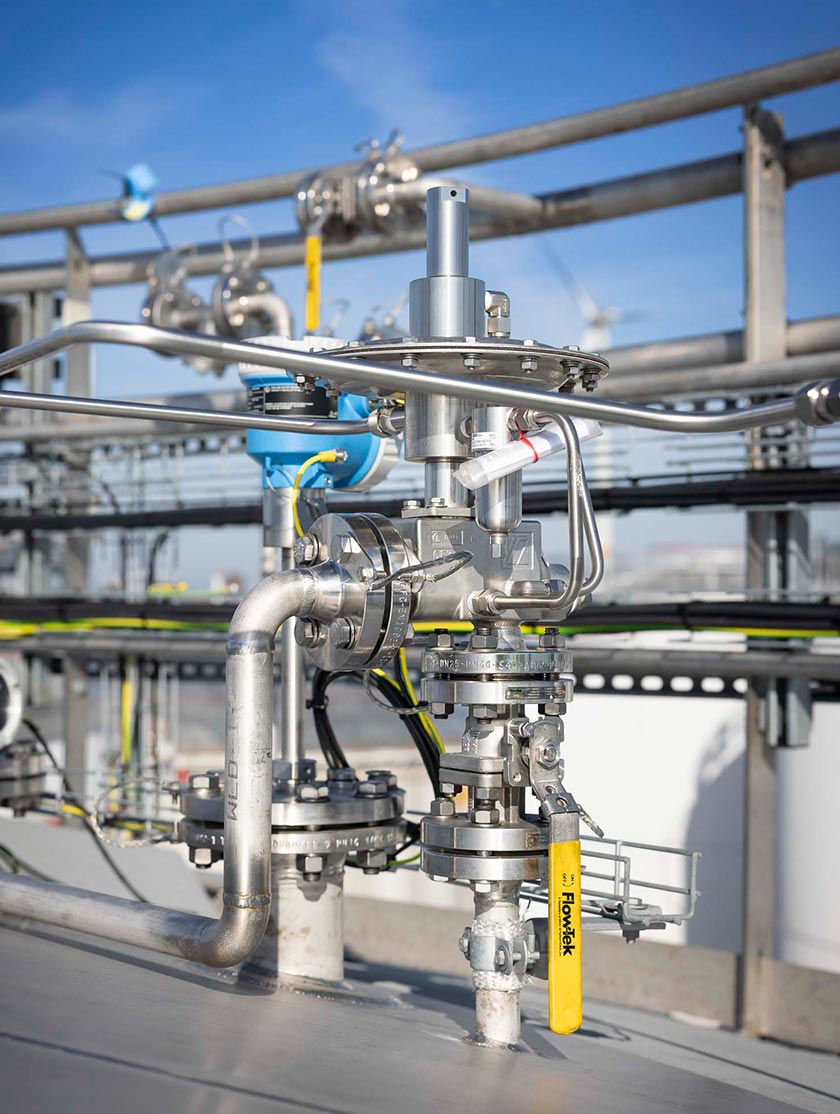Proper Placement of Flame Arrestors in Piping Systems for Safety
In industries where flammable substances are used, implementing safety measures to prevent fires and explosions is crucial. One of the key elements that ensure safety in a piping system is the installation of flame arrestors (also known as flame arresters). Flame arrestors are devices designed to control the spread of open flames in the event of an explosion in a piping system. In this blog post, we will analyze the importance of understanding the location of flame arrestors in piping systems.
What Are Flame Arrestors?
Flame arrestors are typically installed in piping systems that handle flammable gases, vapors, or liquids. These devices are placed in a piping system to prevent the spread of fire by extinguishing the flames or reducing their intensity. They consist of a housing, a spark arrester, a radiator, and a flame extinguisher. The housing acts as a protective barrier, while the spark arrester prevents sparks or flames from entering the system. A heat shield disperses the heat of the flames, and a flame extinguisher interrupts the chemical reaction that keeps the flames burning.
Proper Placement of Flame Arrestors
Installing flame arrestors in the proper location is critical to their effectiveness. The location of flame arrestors should be based on the specific characteristics of the piping system, such as its size, flow rate, and the type of substance being transported. Flame arrestors are generally installed at the inlet and outlet of a piping system or between pipe sections where flow changes. This position ensures that the flame arrestor can immediately capture any flames that may arise, preventing them from spreading further.
Distance Between Flame Arrestors
Another critical factor to consider when installing flame arrestors is the distance between them. As a general rule, a minimum distance of ten pipe diameters should be maintained between flame arrestors. This distance allows flames to cool sufficiently before reaching the next flame arrestor, minimizing the risk of fire spread.
Maintenance and Inspection
In addition to proper placement, it is important to periodically inspect and maintain flame arrestors to ensure their functionality. They should be cleaned and inspected for any signs of damage or blockages that could reduce their effectiveness.
Conclusion
In short, flame arrestors play a crucial role in preventing fires and explosions in pipeline systems. Proper placement of these devices is essential for their effectiveness, and the characteristics of the pipeline system must be taken into account before installation. Regular maintenance and inspection can also ensure that your system is continuously protected. By understanding the placement of flame arrestors in pipeline systems, industries can reduce the risk of fires and explosions and promote safety.
Looking for The Right Flame Arrestor? Get Expert Help Choosing the Ideal Arrestor Engineered To Fit Your Needs |
Cashco’s flame arrestors are engineered to stop the propagation of flames in gas piping systems, helping protect equipment, personnel, and facilities. For more information about Cashco's arrestors, view all models here .
Cashco is dedicated to ensuring you select the best solution for your tank protection needs. Need help choosing the right flame arrestor? Contact us and our experienced team will gladly assist you in finding the ideal product!
Why Flame Arrestors Matter |
Cashco Flame Arrestors are specifically engineered to match the explosive mixtures Maximum Experimental Safe Gap, in order to ensure complete extinction of the flame.



